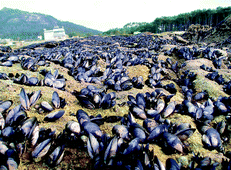Spatial and temporal trends of polycyclic aromatic hydrocarbons in wild mussels from the Cantabrian coast (N Spain) after the Prestige oil spill†
Abstract
Polycyclic aromatic

* Corresponding authors
a
Instituto Español de Oceanografía, Centro Oceanográfico de Vigo, Cabo Estai-Canido, Spain
E-mail:
lucia.vinas@ieo.es
Fax: +34 986 498626
b Department of Environmental Chemistry, CID-CSIC, Jordi Girona Salgado, 18–26, Spain
Polycyclic aromatic

 Please wait while we load your content...
Something went wrong. Try again?
Please wait while we load your content...
Something went wrong. Try again?
J. A. Soriano, L. Viñas, M. A. Franco, J. J. González, M. H. Nguyen, J. M. Bayona and J. Albaigés, J. Environ. Monit., 2007, 9, 1018 DOI: 10.1039/B704989G
To request permission to reproduce material from this article, please go to the Copyright Clearance Center request page.
If you are an author contributing to an RSC publication, you do not need to request permission provided correct acknowledgement is given.
If you are the author of this article, you do not need to request permission to reproduce figures and diagrams provided correct acknowledgement is given. If you want to reproduce the whole article in a third-party publication (excluding your thesis/dissertation for which permission is not required) please go to the Copyright Clearance Center request page.
Read more about how to correctly acknowledge RSC content.
 Fetching data from CrossRef.
Fetching data from CrossRef.
This may take some time to load.
Loading related content
